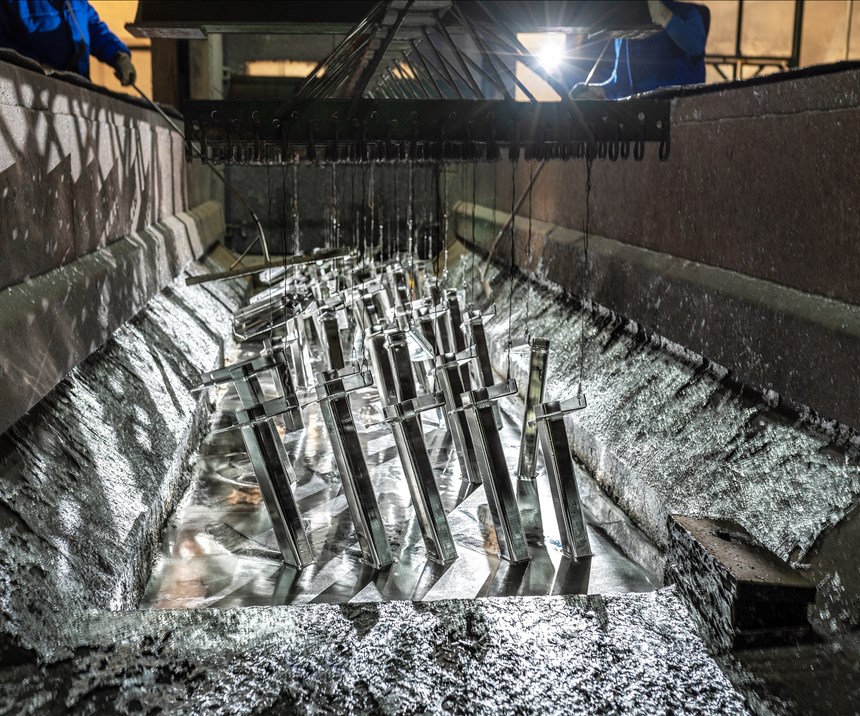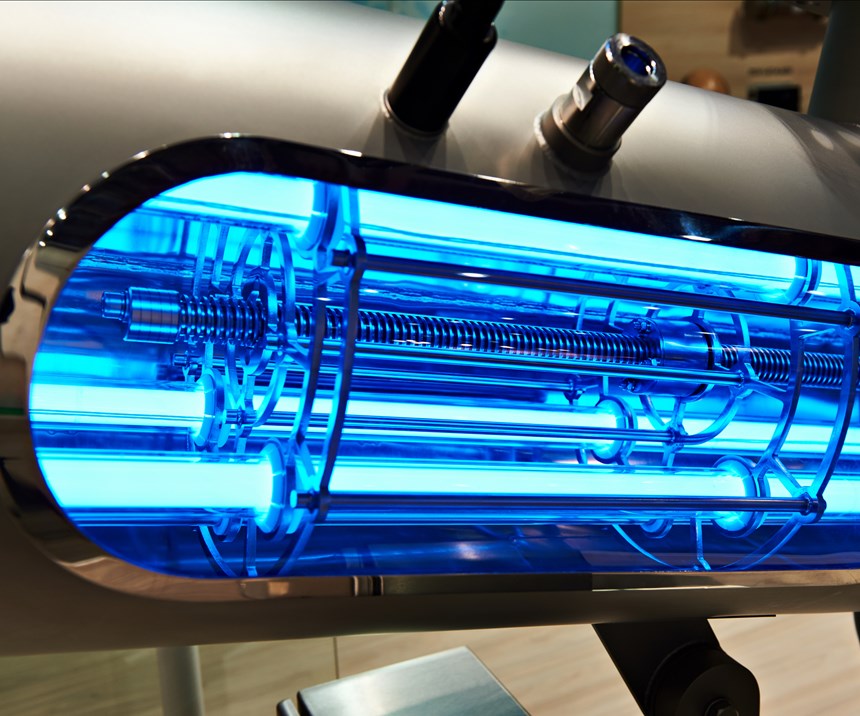Steps to Take Control of Wastewater Treatment
Finishing operations should consider their environmental impact and other motivating factors, beyond mere compliance.
Wastewater treatment has become an increasingly critical part of plant operations over the last decade, and manufacturing companies across all industrial sectors are prioritizing the reduction of water consumption.
At the heart of any system is the equipment. For finishing shops that are concerned about the impact their wastewater has on both the environment and their bottom line, there are a variety of options available, each designed to perform specific types of treatment and deliver a quick return on investment (ROI).
Here are the most common types of wastewater equipment, how they operate and how they impact a finishing business’ profitability:
Ultrafiltration Systems
The concentration and chemical form of the soluble heavy metals in a particular wastewater stream varies, depending on the industry and the mix of operations at a processing site. For example, in the plating industry, specialty chemical suppliers have developed alloy technologies to maximize the high corrosion resistance of the metal.
The advanced membrane technology used in ultrafiltration (UF) provides a simplified, effective and superior solution for removing soluble heavy metals from wastewater produced by many processes, including electroplating and electroless nickel plating. UF systems allow finishing operations to reuse up to 98% of their surface finishing wastewater without using chemical additives.
Complexors used in today’s surface finishing industry make the wastewater extremely difficult to treat through conventional clarifier techniques. Tubular ultrafiltration is a very effective method of removing virtually all of the precipitated metal hydroxide/sulfides/carbonates from the wastewater stream. The resulting high-quality permeate can be fed directly to reverse osmosis equipment for reuse, reclaimed “as is” or discharged to the publicly owned treatment works (POTW).
Membrane technology provides numerous advantages to the process of surface finishing wastewater treatment, including:
- Eliminating the need for clarifiers or lamella separators.
- Not requiring coagulants for processing.
- Reducing the volume of sludge generated.
- Lowering labor costs.
- Lowering chemical costs.
- Producing a more consistent effluent.
Reverse Osmosis Systems
Reverse Osmosis (RO) technology removes dissolved solids and impurities from water by using a semipermeable membrane which allows the passage of water, but leaves the majority of dissolved solids/salts and other contaminants behind. The RO membranes require a greater-than-osmotic pressure and high-pressure water to achieve the desired result. The water that passes through the RO membrane is called the permeate and the dissolved salts that are rejected by the RO membrane are called the concentrate.
A properly designed and operated RO system can remove up to 99.5% of incoming dissolved salts and impurities, as well as virtually all colloidal and suspended matter from the most challenging waste and feed water applications. Typically used in industrial, metalworking and surface treatment operations, RO technology is the final process after ultrafiltration or the chemical treatment of waste and feedwater.
Vacuum Evaporation and Distillation
Evaporation is a natural phenomenon and a clean separation technology recognized as a Best Available Technique (BAT) in several wastewater treatment processes. Because it removes the water from the contaminants, rather than filtering the contaminants from the water, it is distinct from other separation processes.
No other technology can attain such high water recovery and concentration rates as vacuum evaporators, which accelerate the natural evaporation process to treat and distill industrial wastewater amounts from 1 to 120 tons per day. They are capable of achieving residual total solids concentrations of more than 85%.
The three primary vacuum evaporators are:
- Heat Pumps: Flexible and versatile with low electrical energy consumption and superior reliability.
- Hot Water/Cold Water: Reduce operating costs by utilizing existing excess hot water/steam and cooling water.
- Mechanical Vapor Recompression (MVR): Engineered for the treatment of large wastewater flow rates with low boiling temperatures for reduced energy consumption.
Paper Bed Filters
These types of filters work by gravity and utilize disposable paper media or permanent filter media. This produces a positive barrier, which removes solids from all free-flowing industrial process liquids. Paper bed filters are suitable for applications involving low- to medium-stock removal of ferrous and nonferrous metals, as well as organic and inorganic contaminants such as glass, rubber and plastic. Paper bed filters can extend coolant and tool life by an average of 27%, in addition to increasing surface finish quality.
Standard paper bed filtration units are available with or without magnetic separation and can handle flow rates of up to 130 gallons per minute (GPM). Different classes of filter media allow for adjustments of micron clarity. A drum-type model, which can process up to 500 GPM of fluid, occupies one-third the floor space of a paper bed filter.
Solid Bowl Centrifuges
These units optimize centrifugal force (instead of consumable media) to separate solids from liquids in metal processing applications where removal of fines is important for recycle and reuse goals. Process liquid is either pumped or gravity fed to the centrifuge inlet. Process solids are then centrifugally separated from the liquid phase and collected in an easily removable rotor, also known as a liner. Clarified liquid overflows the rotor into the outer case and is returned by gravity to the process, which minimizes the cost of hauling waste coolants and water away from the facility.
Solid bowl centrifuges provide high-performance liquid/solid separation for all types of particles — metallic and nonmetallic, ferrous and nonferrous — and are available in both manually cleaned rotor style (with a reusable liner) and fully automatic self-cleaning designs.
Tramp Oil Separators
In this wastewater treatment solution, contaminated fluid flows through a series of baffles and a porous media bed, where free and mechanically dispersed oils are separated from the fluid. The clarified fluid then flows over the effluent discharge weir back to the reservoir for reuse. The collected oils, inverted emulsions and other waste materials are collected at the top of the separator and automatically discharged into a suitable receptacle. Using gravity flow and coalescence, these separators can reduce tramp oils to less than 1% in a single pass, while utilizing no consumable products.
Tramp oil separators can also:
- Reduce new fluid purchase costs up to 75% (including synthetic and semisynthetic coolants, soluble oils and wash waters).
- Reduce the cost of wash water detergents, heating and disposal.
- Reduce hazardous waste volumes up to 90%.
- Achieve system payback (ROI) in six months or less.
Vacuum Filters
Capable of continuous operation, vacuum filtration systems can eliminate significant downtime. Virtually maintenance free and delivering high-sludge volume elimination, these systems will also deliver lower production costs. Disposable media vacuum filters utilize a vacuum chamber to draw contaminated coolant through the disposable filter media. By applying the proven principle of optimal filtration through contaminate or sludge buildup, a filter cake forms on the media. These units are capable of impressive flow rates of up to 2,000 GPM.
Semipermanent vacuum filters further reduce operation costs by eliminating the need for disposable media. Back flushing with clean coolant keeps the filter clean without requiring large volumes of air. The back-flushed solids drop from the filter element and settle into a tank, where they are removed via a chain dragout/flight arrangement. These units require minimal floor space and are completely self-contained, simplifying maintenance and operation.
Considered an increasingly critical topic of global concern, wastewater treatment can be addressed with any number of existing, efficient and effective systems. While it certainly makes business sense to implement such a process, it can appear to be a daunting task for finishing shops that are unfamiliar with the treatment and reuse of in-house wastewater. On the surface, up-front costs often associated with adding a wastewater treatment system can seem prohibitive.
Members of the industrial finishing community can employ many different strategies to help themselves go beyond mere compliance and begin the process of positively affecting water quality. This can simultaneously bolster their brand, ROI and bottom line.
Tim Hanna is vice president of business development of PRAB. Visit prab.com.
Related Content
Understanding and Managing White Spots on Anodized Aluminum
Having trouble with spotting defects when anodizing? Taj Patel of Techevon LLC offers a helpful overview of the various causes of white spots and potential solutions.
Read MoreA Chromium Plating Overview
An overview of decorative and hard chromium electroplating processes.
Read MoreHow to Choose Between Sulfate and Chloride-Based Trivalent Chromium
There are several factors to consider when choosing between sulfate and chloride-based baths for trivalent chromium plating. Mark Schario of Columbia Chemical discusses the differences and what platers should keep in mind when evaluating options.
Read MorePrevent Plating Problems with Critical Inspections
Tanks and their contents should be regularly inspected visually and analytically. When a quality issue arises, it is important to quickly pinpoint where the main problem is by checking which parameter is out of line.
Read MoreRead Next
Education Bringing Cleaning to Machining
Debuting new speakers and cleaning technology content during this half-day workshop co-located with IMTS 2024.
Read MoreEpisode 45: An Interview with Chandler Mancuso, MacDermid Envio Solutions
Chandler Mancuso, technical director with MacDermid Envio discusses updating your wastewater treatment system and implementing materials recycling solutions to increase efficiencies, control costs and reduce environmental impact.
Read MoreA ‘Clean’ Agenda Offers Unique Presentations in Chicago
The 2024 Parts Cleaning Conference, co-located with the International Manufacturing Technology Show, includes presentations by several speakers who are new to the conference and topics that have not been covered in past editions of this event.
Read More

























